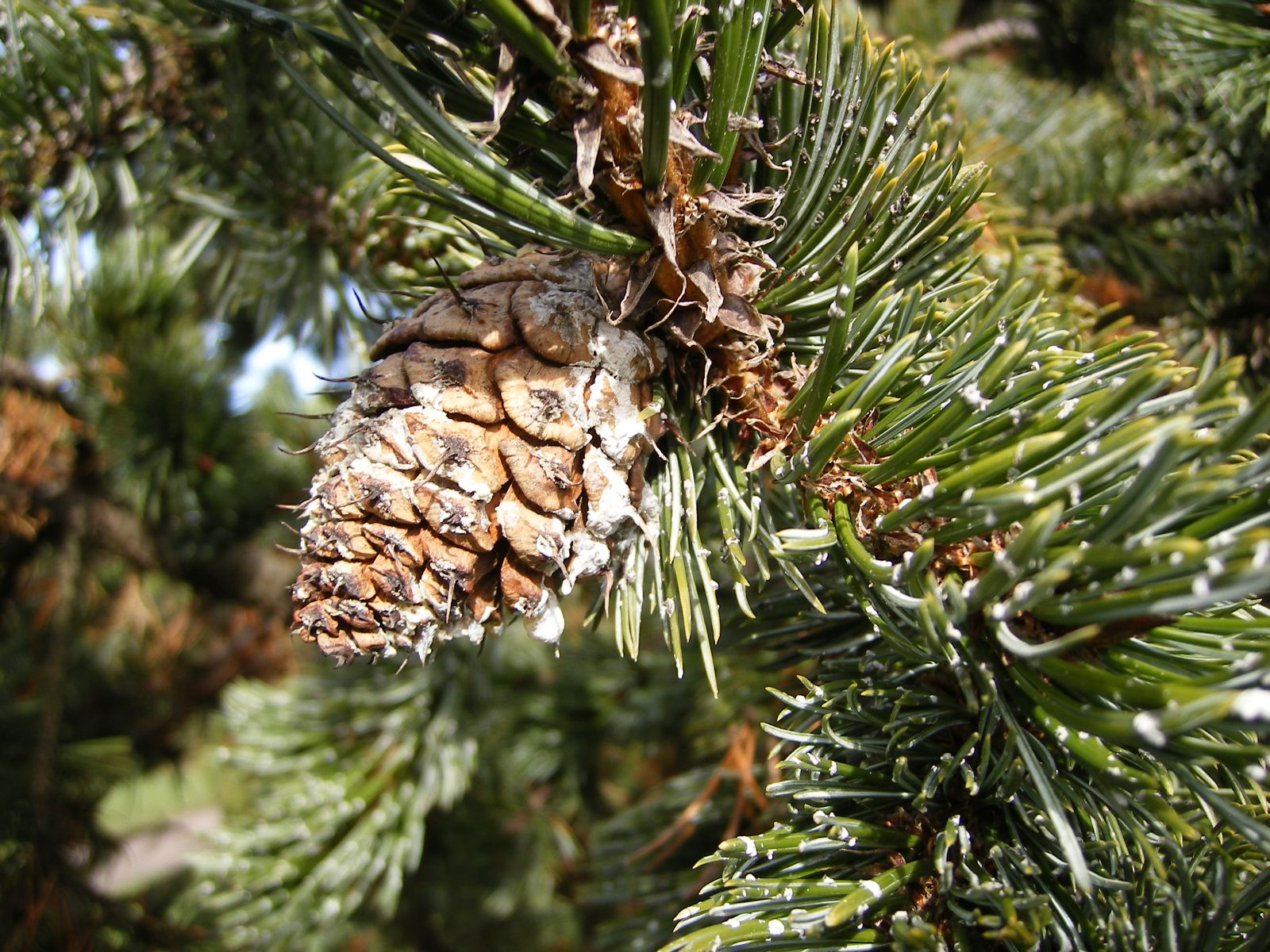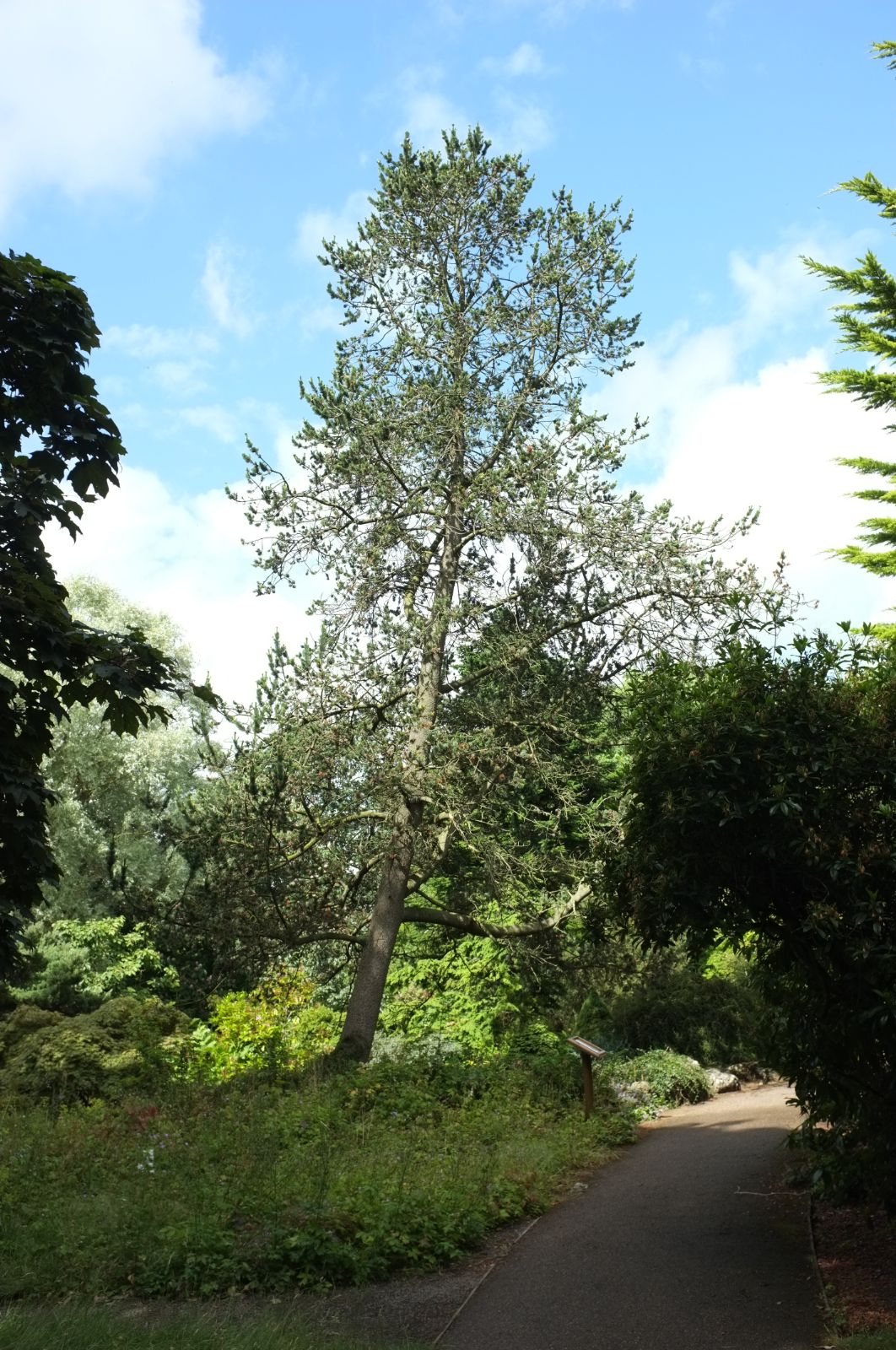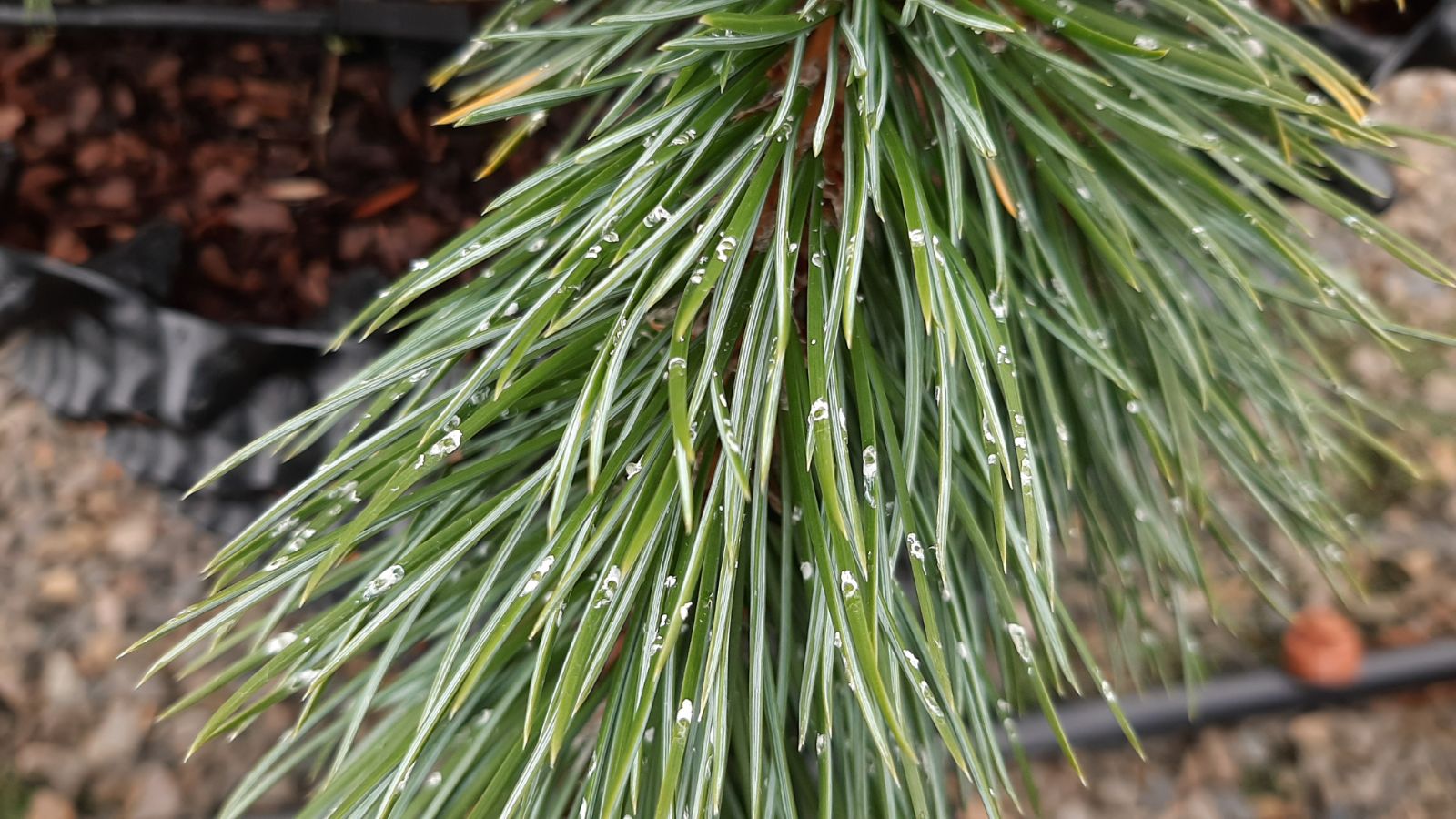Pinus balfouriana
Credits
Article from Bean's Trees and Shrubs Hardy in the British Isles
Recommended citation
'Pinus balfouriana' from the website Trees and Shrubs Online (treesandshrubsonline.
Genus
Common Names
- Foxtail Pine
Infraspecifics
Other taxa in genus
- Pinus albicaulis
- Pinus arizonica
- Pinus armandii
- Pinus attenuata
- Pinus ayacahuite
- Pinus banksiana
- Pinus bhutanica
- Pinus brutia
- Pinus bungeana
- Pinus canariensis
- Pinus cembra
- Pinus cembroides
- Pinus chiapensis
- Pinus contorta
- Pinus coulteri
- Pinus culminicola
- Pinus densata
- Pinus densiflora
- Pinus devoniana
- Pinus durangensis
- Pinus echinata
- Pinus edulis
- Pinus elliottii
- Pinus engelmannii
- Pinus eremitana
- Pinus flexilis
- Pinus gerardiana
- Pinus greggii
- Pinus × hakkodensis
- Pinus halepensis
- Pinus hartwegii
- Pinus heldreichii
- Pinus henryi
- Pinus × holfordiana
- Pinus hwangshanensis
- Pinus jeffreyi
- Pinus johannis
- Pinus koraiensis
- Pinus lambertiana
- Pinus leiophylla
- Pinus longaeva
- Pinus massoniana
- Pinus maximartinezii
- Pinus monophylla
- Pinus montezumae
- Pinus monticola
- Pinus morrisonicola
- Pinus mugo
- Pinus muricata
- Pinus nelsonii
- Pinus nigra
- Pinus oocarpa
- Pinus orizabensis
- Pinus palustris
- Pinus parviflora
- Pinus patula
- Pinus peuce
- Pinus pinaster
- Pinus pinceana
- Pinus pinea
- Pinus ponderosa
- Pinus pseudostrobus
- Pinus pumila
- Pinus pungens
- Pinus quadrifolia
- Pinus radiata
- Pinus remota
- Pinus resinosa
- Pinus rigida
- Pinus roxburghii
- Pinus sabiniana
- Pinus serotina
- Pinus sibirica
- Pinus strobiformis
- Pinus strobus
- Pinus sylvestris
- Pinus tabuliformis
- Pinus taeda
- Pinus taiwanensis
- Pinus teocote
- Pinus thunbergii
- Pinus torreyana
- Pinus virginiana
- Pinus wallichiana
- Pinus wangii
- Pinus yunnanensis
A small tree 20 to 40, rarely over 50 ft high, forming in a small state a very densely branched, bushy tree; young shoots covered with minute but scarcely visible down, so closely packed are the leaf-bundles. Leaves mostly in fives, sometimes in fours, persisting as long as twelve or fifteen years, very stiff and sharply pointed, about 11⁄2 in. long, three-angled, two surfaces at first white with stomata, becoming nearly green like the third with age; margins not toothed. The scales of the leaf-sheath curl back and make a sort of rosette surrounding the base of the leaf cluster, and persist in that shape. Cones 21⁄2 to 5 in. long, each scale armed with a minute, incurved prickle.
Native of California, where it occupies two widely separated areas. One is in the northern part of the coastal ranges, where it was discovered by Jeffrey in the mountains between the Scott and Shasta rivers in 1852, when collecting for the Oregon Association, and introduced by him from the same locality. The other area is in S. California, in the Sierra Nevada. The species was named by the Oregon Committee in honour of Prof. J. H. Balfour, Regius Keeper of the Edinburgh Botanic Garden from 1845 to 1880, who also described it, in a report to members of the Association.
P. balfouriana is one of the most distinct and attractive pines for limited spaces. It grows very slowly, but its long-retained, closely packed leaves give it a healthy, vigorous aspect. It is exceedingly rare in gardens, however. The two largest examples grow in the Edinburgh Botanic Garden, both a little over 30 ft high and about 21⁄4 ft in girth (1970). It, and its immediate allies (see below), differ from the other five-leaved pines in their short needles, and in having the sheaths in the form of a rosette.
From the Supplement (Vol. V)
specimens: Prested Hall, Essex, 38 × 23⁄4 ft (1977); Beaufront Castle, Northumb., 37 × 21⁄2 ft (1982); Edinburgh Botanic Garden, 50 × 23⁄4 ft and 46 × 23⁄4 ft (1985); National Botanic Garden, Glasnevin, Eire, 33 × 23⁄4 ft (1980).
P. aristata – specimens; Kew, pl. 1908, 26 × 13⁄4 ft (1976); Prested Hall, Essex, 33 × 21⁄2 ft (1977); R.H.S. Garden, Wisley, Surrey, Rock Garden, 33 × 13⁄4 ft (1975); National Pinetum, Bedgebury, Kent, pl. 1932, 13 × 3⁄4 ft (1971); University Botanic Garden, Leicester, pl. 1923, 40 × 21⁄2 ft and, pl. 1928, 30 × 13⁄4 ft (1985); Leighton Hall, Powys, 27 × 11⁄2 ft (1984).
As now understood, P. aristata is confined to Colorado, New Mexico and Arizona. Trees growing farther west, in Utah, Nevada and western California, are now considered to be a distinct species – P. longaeva D. K. Bailey – described in 1970. This lacks the resin-dots on the leaves characteristic of P. aristata and the cones are reddish brown, against greyish brown in the other species. It is estimated to attain an age of 4,000 to 5,000 years, whereas the most ancient trees of its neighbour are a mere 2,000 years old. It is, incidentally, quite possible that some plants introduced earlier as P. aristata are really P. longaeva.
Pinus aristata Engelm.
Common Names
Bristlecone Pine
Synonyms
P. balfouriana var. aristata (Engelm.) Engelm.
This is very closely allied to the above, but is always distinguishable by conspicuous exudations of whitish resin on the leaves, giving them very much the appearance of being infested with some scale insect. The branches are more drooping, the young shoots more distinctly downy, and the cones of P. aristata are armed with considerably longer, slender prickles. Introduced in 1863 from Colorado, where it grows on the outer range of the Rocky Mountains, also in New Mexico and Arizona. It is better represented in cultivation than P. balfouriana, but rare none the less. Among the recorded specimens are: Kew, pl. 1908, 20 × 1{1/2} ft (1969); Royal Horticultural Society Garden, Wisley, 20 × 1{1/2} ft (1968); National Pinetum, Bedgebury, Kent, pl. 1932, 13 ft × 8 in. (1971); Leighton Hall, Montgom., 27 × 1{1/4} ft (1960).





